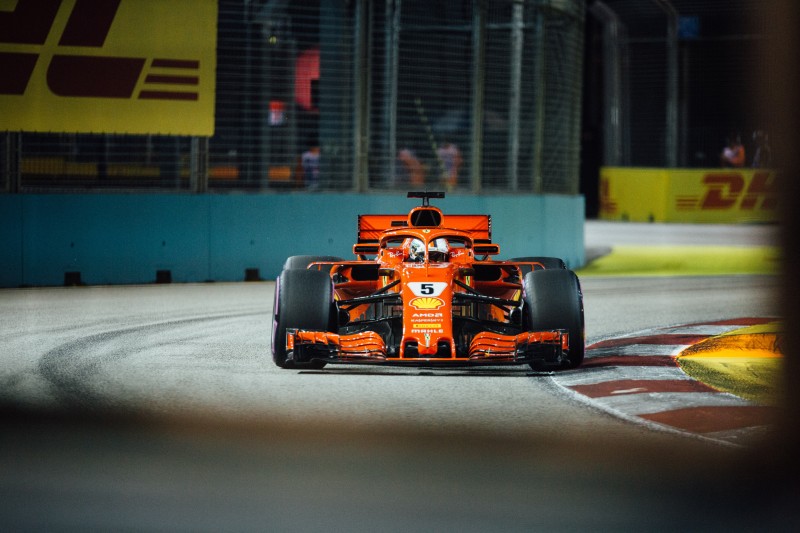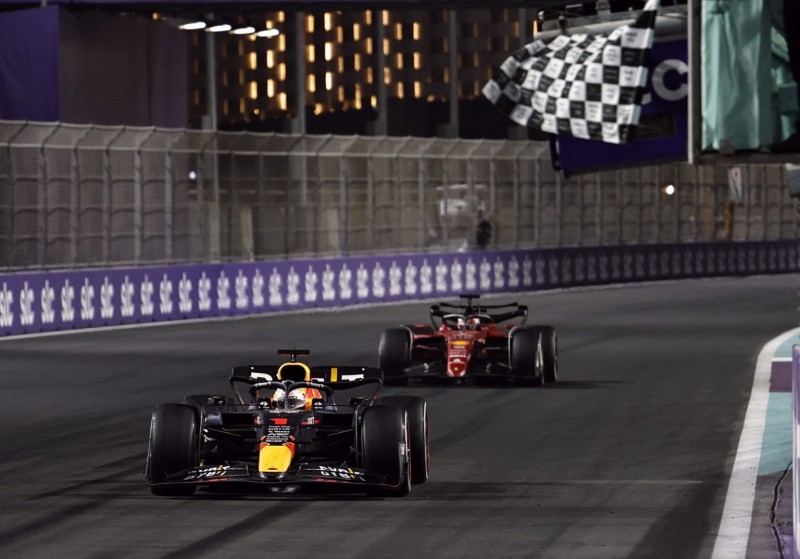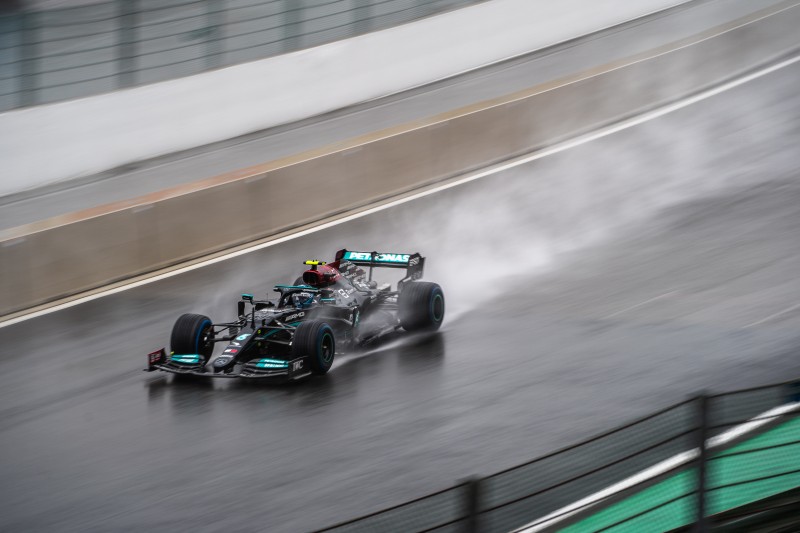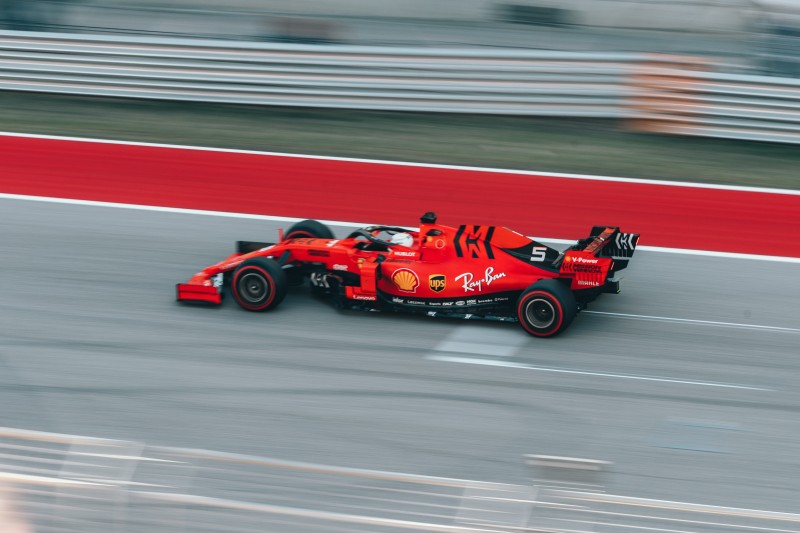
The word “DRS” will be familiar to everyone who has followed an F1 race. It can be really complicated if you are unfamiliar with Formula 1 and its mechanical aspects of it. Ever since its debut in 2011, DRS has played a crucial role in the sport, yet many people are unaware of what it is or how it operates.
DRS or the Drag Reduction System added in 2011, is a rear wing component that can be adjusted and is utilized by drivers to pass slower vehicles in front of them. Only under specific circumstances, for instance, when a driver is less than one second behind another vehicle, can DRS be employed.
So, what is DRS? DRS activates a flap on the rear wing of the car to minimize aerodynamic drag, giving the trailing car in turbulent air a speed advantage of 10–12 km/h to pass the leading car that is in clear air.
These circumstances change based on where the race is in it and how much distance there among the two vehicles. To help you understand why DRS is so crucial in Formula 1, we’ll go into the mechanisms at play and these different circumstances below.
Table of Contents
How Does DRS Function and What Is It?
DRS, which means Drag Reduction System, is a changeable component of the rear wing that drivers who want to pass other vehicles employ. It is only usable in limited circumstances. Since its debut in 2011, it has proven essential to the sport because drivers frequently require DRS to overtake.
Why The Rear Wing Is Important?
The rear wing is one of many parts that make up F1 vehicles. There are two parts to this: a fixed part and an adjustable part. Since this enables them to turn at very high speeds, F1 cars are made to generate a lot of drag force giving them grip.
If you want to know What’s the Difference Between IndyCar and F1? (YOU DIDN’T KNOW), click here.
The rear wing makes it possible for the air above the vehicle to push it toward the surface, increasing tire traction while not increasing the mass of the vehicle.
Note: As the air strikes the wing, the vehicle’s speed is reduced as a result. While grip increases speed in turns, the automobile needs to generate as less drag as possible on straightaways. Air resistance generates the downforce required for corners.
Corners vs. Straights
On the straightaways, however, downforce is not as important because air resistance creates a dragging force that works against the forward velocity of the vehicle.
Therefore, vehicles have to decrease drag without losing too much downforce in the bends to move more quickly. The drag reduction system, sometimes known as DRS, is a changeable rear wing component.
If you want to know Why Are F1 Cars Getting Bigger? (WHAT YOU DIDN’T KNOW), click here.
The wing appears standard and produces the typical amount of downforce when the adjustable element is folded. The upper portion of the wing, nevertheless, opens up whenever the driver presses the DRS switch, allowing air to flow through and lowering drag.
This indicates that the vehicle is capable of moving up to 12 kph quicker on straightaways. They have an advantage over others when passing.
Who Is Responsible for DRS in Formula One?

In Formula 1, the DRS is not an automatic system; rather, it is controlled by the driver. The device, which opens the flap in the rear spoiler to lower drag and boost peak speed, is activated by a switch on the steering wheel.
If you want to know Why Do F1 Cars Have Sidepods? (INTERESTING FACTS!!!), click here.
They won’t be able to engage DRS unless they are inside one second of the vehicle ahead of them when they are in the DRS-specified distance.
It requires the driver to click a switch on the steering wheel in order to engage it, but once it is activated, the DRS flap on the rear wing will close automatically once the driver takes their foot off the accelerator, hits the brakes, or reaches the end of the DRS area, whatever occurs first.
The F1 DRS Regulations
DRS is only permitted to be utilized in accordance with its rules in the event that a trailing driver is within one second of the vehicle in front of them and the race director believes the circumstances to be acceptable to permit the application of DRS. DRS is restricted to usage on the track’s designated zones.
The Formula 1 drag reduction system DRS is subject to some rules:
- The pursuing vehicle is only one second behind the lead vehicle.
- After the grand prix start, a restart, or a safety car period, two racing laps must have passed before the DRS technology can be used.
- The following vehicle is in an FIA-designated DRS zone.
- If the race director determines that the racing environment is dangerous, such as when the event is being staged in the rain, the DRS system might not be activated.
- Unless a driver is within one second of a car in front of them, they are not permitted to employ the DRS system to protect their position.
A Significant Benefit
Although the DRS mechanics can appear complicated, the key benefit is that it gives drivers an additional 12 kilometers per hour of speed on the track’s horizontal lines when overtaking other vehicles.
There are requirements that must be completed before they can utilize the trigger, so they can’t just keep pressing it whenever they want during the whole competition.
If you want to know What Are F1 Grid Penalties? (DETAILED EXPLANATION), click here.
The distance between you and the vehicle in front of you that you are attempting to pass is the first and, arguably, most crucial DRS criterion.
For you to employ DRS, the distance between your vehicle and the vehicle ahead must be less than one second.
This implies that you must get somewhat close to utilizing it, and yet then, there are just a few spots on the track where you can do so.
When Will DRS Be Removed out of F1?
When Ross Brawn was appointed managing director of Formula One in 2017, he said he wanted to determine a long-term option to eliminate DRS. Regardless of the new rules that have made racing considerably closer, his perspective has altered.
If you want to know How Much Does an F1 Pit Crew Member Earn? (INTERESTING FACTS), click here.
There are others who believe that the Drag Reduction System (DRS) is overly manufactured and detracts from the natural beauty of Formula One racing, which is considered to be the most prestigious form of motorsport. Others think that without DRS, the Grand Prix will be far more boring and feature less wheel-to-wheel racing.
DRS is occasionally thought to be overly potent and makes passing quite simple. The FIA has always had a difficult time striking the appropriate balance, but lately, they have done a far better job of it.
Note: Since it’s improbable that the sport would have standards that can make the race even better, F1 would have to abandon DRS as soon as possible. DRS appears to be here to stay.
DRS Zones: Where Are They?
The longest straights at an F1 track are typically where the DRS zones are located. Circuits typically include one to four DRS zones, each of which is followed by a DRS detection zone. Monaco, for instance, has just one DRS zone, whereas Bahrain’s course and the Red Bull Ring both have three.
If you want to know What Is the Top Speed of an F1 Car? (AMAZING!!!), click here.
These zones are made up of an activation zone and a detecting point, and their lengths vary. The space among the two vehicles is measured by detectors at the observation sites, and if less than one second separates them, the pursuing vehicle can activate its DRS system.
Only if the leading vehicle is also inside one second of the vehicle ahead of them can they deploy their DRS as a defensive device. When DRS can be employed during the race depends on additional factors.
If you want to know How Long Is a Formula One Season? (For The Fans), click here.
It is prohibited from being utilized during the opening two laps of the race, during a restart, or following the deployment of a safety car. If the FIA determines it to be risky, such as because of intense rain, it might also not be allowed.
Note: During an F1 race, DRS can be utilized an unlimited number of times. After passing the DRS detection zone, drivers can deploy DRS if they are within one second of the car in front of them and the race director has allowed it.
What Is The Total Number of DRS Zones?

Each track has a different number of DRS zones, and the number is also influenced by other venue features.
Generally, a DRS zone is included on each major straight at every circuit. However, extra zones—which may include runs with shallow corners—can be introduced if a circuit has a notably bad reputation for passing. The lengthy and winding zones through the final turns and into the pit straight in Baku, as well as the areas between Turns 9 and 11 in Miami, are both examples of runs that fit this description.
The reprofiled track’s original listing for the recent 2022 Australia GP featured 4 DRS zones. The idea was that drivers could use the pitstraight and the curved section that replaced the previous chicane in Melbourne to close in on their opponents and then use DRS to try to pass them in the other two zones, which are turns that favor passing with big braking areas (Turns 3 and 11).
If you want to know What Are The Best F1 Simulators? (ON THE MARKET), click here.
Before the final practice session, the DRS zone between Turns 8 and 9 at the 2022 Albert Park layout was eliminated for safety reasons in response to lobbying from several teams.
This meant that 3 DRS zones remain the most that have ever been utilized in an F1 qualification or race event.
Note: It is often dangerous to drive with a rear wing slot open throughout many corners, even if DRS can be employed through bends with extremely shallow angles — and at some tracks, these curves may not even be classified as genuine corners by the FIA.
Despite the fact that the lower drag would boost top speed, the absence of downforce has a significant negative impact on automobile handling. Considering that DRS zones typically end at the finish of lengthy straightaways or acceleration zones, this could result in serious accidents.
If you want to know How Many F1 Drivers Have Died? (CHRONOLOGICAL), click here.
The FIA has permitted drivers to try to take certain particular turns while DRS is on.
A well-known instance is the 2018 British GP, where a 3rd zone was added and ran through the extremely fast opening 2 corners of Silverstone and the pit straight at the racetrack.
However, in both practice and the race, Romain Grosjean and Marcus Ericsson experienced two significant collisions at the opening circuit, Abbey. The zone that was eliminated for 2019 has not been used by F1 at Silverstone in the succeeding two seasons.
Note: If a driver’s rear wings become jammed open, the prospect of a DRS failure may result in them seeing the black flag with an orange disc.
If this occurs, the driver must return to the pits so that the flap can be manually closed by mechanics, and if it cannot be fixed, the driver must refrain from using the flap again.
If you want to know How Much Does a NASCAR Car Cost? (IN DETAIL), click here.
At the 2018 Italian GP, Ericsson experienced a well-known instance of a DRS failure that resulted in a crash when the DRS on his Sauber car failed to close as predicted when he applied the brakes quickly.
When It Comes to Qualifying, Does F1 Use DRS?
In qualifying, F1 vehicles do utilize DRS. The vehicles are limited to using DRS in designated DRS zones, much like in the race. The variation is that drivers may still use DRS in DRS zones during qualifying, even though they are not required to be within one second of the vehicle ahead.
These guidelines and limitations on DRS usage stop drivers from overusing it. The race’s front-running vehicle would probably never be overtaken if they used DRS as frequently as they pleased. The pursuing vehicle would not benefit if the car ahead could deploy it as a protective device at any moment.
The Purpose of DRS in Formula One
1. Keeping Things in Harmony
We must first get a fundamental grasp of what transpires when a vehicle is pursuing another vehicle in order to explain why DRS was developed in the first place.
In essence, F1 vehicles leave “dirty air” trails in their wake. This is because the vehicle’s aerodynamic and downforce packages alter how the air passes over and under the vehicle.
The air is essentially blown around out the back of the automobile in an extremely volatile manner as it contacts the front and rear wings, as well as other parts of the vehicle. This indicates that the leading car may easily cut through the air while leaving highly volatile air in its wake.
Vehicles pursuing this machine must now navigate this choppy air.
2. Clean Air vs. Polluted Air
Driving in the clear air ahead of the leading vehicle is incredibly simple, and it also enables the vehicle to produce the most downforce possible. Tough air does not provide as much downforce on the automobile behind. As a result, when pursuing another vehicle through a corner, they are unable to travel as quickly due to their reduced grip.
On the straightaways, this is less of an issue, but at turns, it can cause drivers to lose valuable time because of the smoky air they must pass through. DRS was created for this purpose.
Note: When the two cars come around the turn and into the straight, the car that was behind them has already lost a significant amount of time since it does not have enough downforce. As a result, the distance between the two cars widens as they approach the straight.
3. Equal Opportunity
Nevertheless, with the DRS zone, the pursuing vehicle can retake the lead as long as the deficit is under a second. By activating the DRS, they are able to close the gap between themselves and the car in front of them more quickly, which levels the competition and provides them with a greater opportunity to pass.
This equalizes the competition and reduces the need for clean air, while also increasing overtaking and crowd excitement.
DRS is clearly not the miraculous overtaking switch that so many folks assume it is. In addition to being only applicable in specific scenarios, but also the actual capabilities of both cars play a significant role in determining whether or not the following automobile can pass the one in front of it.
When they reach the following curve, the driver must attempt to preserve his newly acquired position. The car must have sufficient force and speed to pass.
4. This Is Currently The Best Possible Option
DRS is disliked by many people, who consider it to be a contrived method of passing. But because of the enormous advantage that clean air has over unclean air, modern F1 vehicles produce so much downforce that it is incredibly challenging to pass them.
And until the issue of unclean, turbulent air is resolved, this is the fundamental reason DRS is still used in Formula 1.
Is DRS Ethical?

DRS is equitable because it is available to all drivers. Drivers must properly work to gain the ability to employ DRS because it is only used when circumstances permit and the leading driver is near the car ahead. DRS is more effective on certain of the tracks than it is on others.
The drag reduction system’s (DRS) most obvious benefit is that it makes overtaking on straightaways much easier.
The drawback is that DRS can only be employed when the race director thinks it is safe to do so, and numerous supporters, teams, and racers view this as contrived.
FAQ: Riders Also Ask
When Can Drivers Use DRS?
In races, including backmarker traffic, drivers may only use DRS when they are in the defined activation zones and when they are less than one second behind the leader.
DRS use is unfettered throughout practice and qualifying, with the exception of only being permitted in the authorized zones.
What Other Competition Uses DRS?
In addition to Formula 1, DRS is used in Formula 2 and Formula 3.
Initially, drivers were only allowed to activate and use the technology for a maximum of 6 laps for every feature race and 4 laps for sprint events when it was originally introduced to FIA F3 in 2017 (back when the series was still known as GP3).
DRS use in F3 has been governed by F1 regulations as of 2019. DRS has been a part of F2 ever since it changed its name to GP2 back in 2015, and the series kept using it when it unveiled its new F2 2018 car for the 2018 season.
Prior to adopting GT3 regulations in 2021, the DTM employed DRS in a similar manner to how F1 does today.
In other motorsports competitions, overtaking assistance is widespread. However, these involve increasing engine performance for a predetermined period of time during each race (like the push-to-pass feature in IndyCar and the Overtake System in Super Formula), or as with Formula E’s attack mode, which enables drivers to briefly drive in a greater impactful power deployment configuration, whereas the overall time could indeed vary at each race.
Conclusion
While some may argue whether the DRS is fair and if it should be allowed in F1, we can see that it has a great effect on racing.
